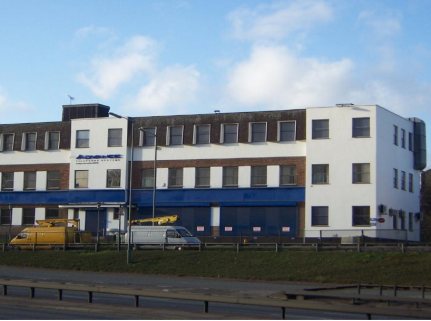Permitted Development Reports
PDR - Prior Notification
Jomas can produce reports required to support the Prior Notification Submission for the conversion of office/agricultural buildings, to residential use. We regularly produce the following reports;
• Transport and Highways Impact Assessment Report
• Contamination Risk Assessment Report
• Flood Risk Assessment Report
We provide a responsive service in support of the Prior Notification Submission.

- Read More
From 30 May 2013, Class J, Part 3 was inserted into the Town and Country Planning General Permitted Development Order (GPDO)1995 (As Amended). This allows, for a 3 year period (until 30 May 2016) and subject to specific land designations and prior notification to the local planning authority, the change of use of a building and any land within its curtilage to a use falling within Class C3 (dwelling houses) from a Class B1a (office) use.
The change of use from B1a (office) to C3 (residential) is subject to the condition that before beginning the development, the developer shall apply to the local planning authority for a determination as to whether the prior approval of the authority will be required relating to:
Transport and highways impacts of the development
Contamination Risks on site
Flooding Risks on site
A further round of amendments to the Town and Country Planning (GPDO) 1995 in England, came into force on 6th April 2014 bringing with it further relaxation of planning rules in favour of residential conversions. The new amendment introduces four new classes of permitted development which allows the change of use of existing retail/office and agricultural buildings into dwellings. There is also provision for agricultural buildings to be converted into state funded schools or registered nurseries.
The 1995 GPDO has now been replaced with a consolidated order – The Town and Country Planning (General Permitted Development) (England) Order 2015 (SI 2015 No. 596) which consolidates previous amendments and introduces new amendments including; the conversion of casinos or amusement arcades to dwelling houses (Class N), and the conversion of premises used for storage or distribution centres, to dwelling houses (Class P).
To determine any prior approval application, the developer/applicant is required to submit details of the proposal, site and any other information deemed necessary for the local planning authority to assess the potential transport and highway impacts and flooding and contamination risks.
The applicants are advised the development shall not be begun before they have received:
Written notice from the local planning authority that prior approval is not required.
Written notice from the local planning authority giving their prior approval,
orThe expiry of 56 days following the date on which the application was received by the local planning authority without the authority notifying the applicant as to whether prior approval is given or refused.
The development must be carried out in accordance with the details approved (where prior approval is required), or in accordance with the detail provided with the notification submission (unless the local planning authority and the developer agreed otherwise).
Contamination Risks
Changes in land use, for example from office to residential or industrial to office, introduce more sensitive end users to the site. This is particularly important if the development site has had a potentially contaminative past land use as there may be increased risks to those living or working on the site from land contamination. In line with the National Planning Policy Framework, where a site is affected by contamination, responsibility for securing safe development and ensuring that the site is suitable for use rests with the developer and/or landowner.
